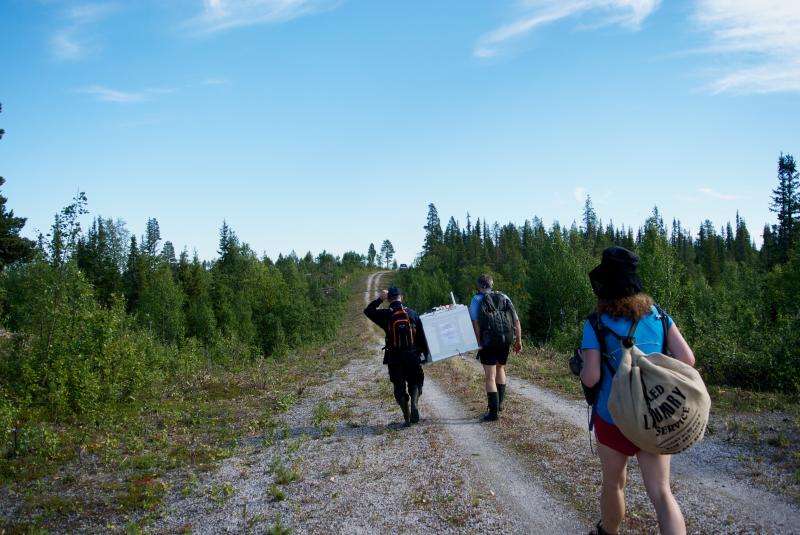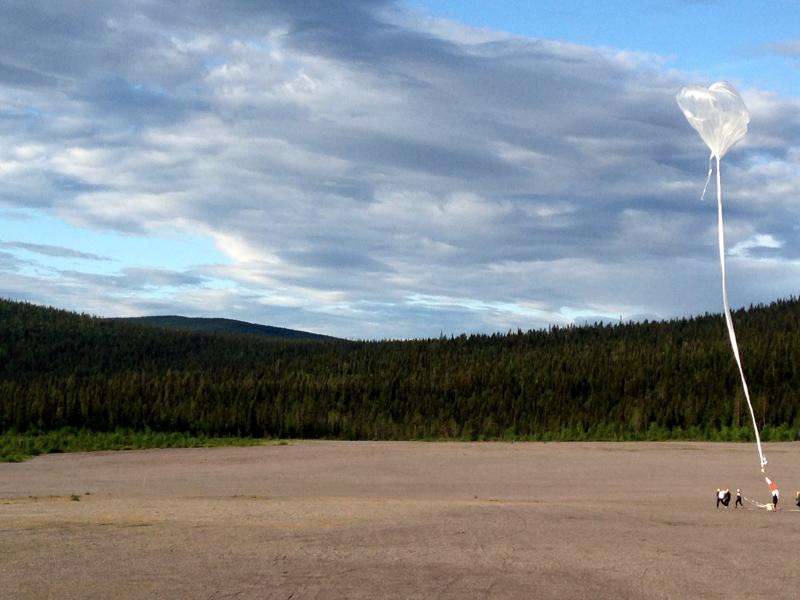NASA's BARREL team returns from Sweden

After seven balloon launches in the bright Arctic sun, the BARREL team has returned home from a 4-week campaign in Kiruna, Sweden, north of the Arctic Circle. Each research balloon observed emissions high in our atmosphere that correlated to events in the complex space environment above. By understanding the connection between these two areas, scientists can better understand the dynamic space weather surrounding Earth, and how it may impact our satellites and radio communications.
This third mini-balloon campaign follows two 20-balloon campaigns that launched from Antarctica in 2013 and 2014. Like the earlier campaigns, these balloons tracked the flow of electrons raining down from the two donut-shaped belts of radiation around Earth, the Van Allen belts. When these energetic electrons strike the atmosphere, they produce telltale X-rays, allowing scientists to record the precipitation. Earth's magnetic field lines reach down to Earth's surface near the north and south poles, meaning that the Arctic and Antarctic are the best places to observe this electron precipitation.
BARREL was originally conceived to work with NASA's Van Allen Probes mission, which studies energetic particles from within the Van Allen belts. By comparing measurements of these particles from both Earth and space, scientists can better understand how the radiation belts are created and maintained.
The team also achieved science conjunction with six other missions during the Sweden campaign, collecting data in coordination with a variety of satellites. In addition to the Van Allen Probes, the team also coordinated data collection with NASA's Magnetospheric Multiscale, or MMS, NASA's Time History of Events and Macroscale Interactions during Substorms, or THEMIS, and Cluster, a joint mission between ESA and NASA. The team also took measurements in conjunction with the FIREBIRD II and AeroCube 6 CubeSat missions, as well as several ground-based instruments.
Another important windfall for the scientists: several of the balloon launches coincided with scientifically interesting events occurring in space, including geomagnetic storms, which occur when the magnetic fields around Earth oscillate, creating a changing electromagnetic environment that – when at its worst – can affect satellites in space and disrupt technological infrastructure on Earth.

"We were able to get simultaneous measurements from the balloon and satellite missions during several periods of electron precipitation," said Alexa Halford, a BARREL researcher at Dartmouth College in Hanover, New Hampshire. "We know the results will be interesting."
The team successfully launched the originally planned six scientific balloons, and favorable conditions allowed them to launch a seventh balloon—recovered after its first successful flight—to collect more data. BARREL's balloons are about 90 feet in diameter, much smaller than the football-field-sized scientific balloons that NASA often launches in the Antarctic. Their small size allows for more launches in a short timeframe, increasing the number of observations.
The NASA-funded BARREL mission – which stands for Balloon Array for Radiation belt Relativistic Electron Losses – is led by Robyn Millan from Dartmouth College.
Provided by NASA





















